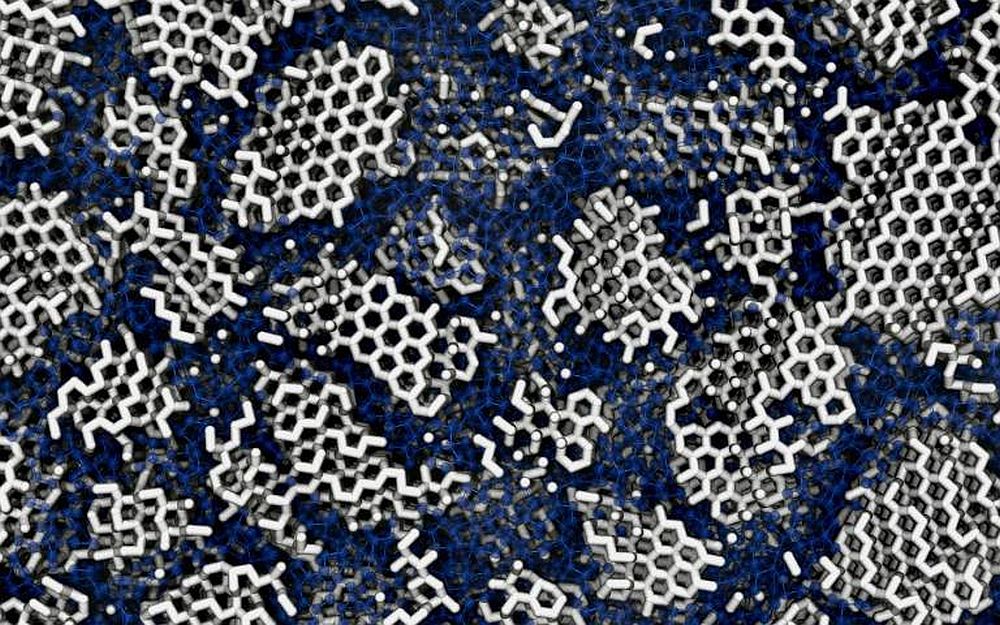
[Image above] Radar devices in aircraft and missiles are often located in the nose. The radar system is protected by a structural, weatherproof enclosure called the radome (seen as the green cone in the picture). Credit: Andrey Korchagin, Flickr (CC BY-SA 2.0)
When I hear someone say “ceramic matrix composite” (CMC), my mind inevitably turns to jet engines.
CMCs are a subgroup of composite materials that consist of ceramic fibers embedded in a ceramic matrix. Because of their high temperature resistance and low density, researchers for decades have investigated using CMCs in aerospace applications. In recent years, some of these dreams reached fruition, for example, when the LEAP aircraft engine by GE Aviation, which contains CMC high-pressure turbine shrouds, entered commercial service in 2016.
The ability of CMCs to resist hostile environments is a recurring theme in many of the applications being explored. For example, in addition to gas turbine engines, researchers are investigating the use of CMCs as heat exchangers in next-generation energy technologies. Yet it is a different property of some CMCs that enables its less well-known application in radomes.
A radome is a structural, weatherproof enclosure that protects a radar antenna from the environment. For a radome to serve its purpose effectively, the material from which it is constructed must minimally attenuate the electromagnetic signal transmitted or received by the antenna—in other words, it must be transparent to radio waves.
Many ground-based radomes are constructed from materials such as fiberglass and polytetrafluoroethylene (PTFE)-coated fabric. However, to protect radar devices housed on aircrafts and missiles, the radomes must withstand extreme mechanical, thermal, and chemical demands—which is where CMCs come into play.
Some CMCs are transparent to radio waves. This property, combined with their temperature resistance and low density, make CMCs ideal candidates for aerospace radomes.
Several inorganic continuous fibers, such as quartz, silicon nitride (Si3N4), and boron nitride (BN), are suitable candidates as reinforcements in aerospace radome composites. But each of these choices has its limitations.
“Because of the occurrence of re-crystallization and particle coarsening, quartz fibers undergo serious degradation of mechanical strength at temperatures above 900°C. Although BN fibers show excellent high-temperature stability, with a melting point above 2900°C, their low mechanical strength impedes any further development. Generally, Si3N4 fibers possess higher mechanical strength than BN fibers, while the thermal resistance and the dielectric properties of Si3N4 fibers are inferior to BN fibers,” researchers write in a recent open-access paper.
The researchers come from several universities and institutes in China. They note that much research has taken place on developing new types of ceramic fibers containing boron, nitride, and silicon to achieve fibers with the merits of both boron nitride and silicon nitride fibers, called SiBN fibers.
Many studies focus on preparing SiBN fibers through polymer-derived ceramic processes because these methods allow design of fibers with low impurity. However, industrializing a polymer-derived ceramic fabrication process for SiBN fibers is proving difficult.
Methods that rely on fiber synthesis from single-source precursors usually require multiple-stage processes, resulting in significant yield loss and the unavoidable removal of by-products. On the other hand, a previous study by some of the current paper’s researchers that used a mixture of two polymers for the precursor faced difficulties due to the sensitivity of one polymer to moisture.
In the recent study, the researchers again investigated using a polymer mixture for the precursor. However, they replaced the polymer that was sensitive to moisture with polycarbosilane (PCS), which is known for its good solubility and fusibility.

Composition of the polymer precursors poly(tri(methylamino)borazine (PBN) and polycarbosilane (PCS), and SiBN ceramic derivatives obtained at 1,600°C. Credit: Li et al., Materials (CC BY 4.0)
The researchers successfully synthesized three kinds of SiBN composite fibers containing 5 wt.%, 15 wt.%, and 25 wt.% silicon nitride. The fibers contained nanocrystalline boron nitride and amorphous silicon nitride, and mean tensile strength and Young’s modulus were enhanced with increasing silicon nitride mass content.
The researchers write that the current “combination of improved mechanical properties and excellent dielectric behavior [witnessed in this study] demonstrated the potential for wave-transparent applications.” In the future, they plan to optimize the oxygen content to further improve the mechanical properties.
The open-access paper, published in Materials, is “Characterization and microstructural evolution of continuous BN ceramic fibers containing amorphous silicon nitride” (DOI: 10.3390/ma14206194).
Author
Lisa McDonald
CTT Categories
- Aeronautics & Space


